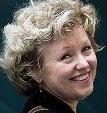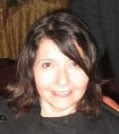Can a dog become a cat? Can a
non-fiction author write fiction?
Historians are plainspoken
creatures. They arrange narratives in the clearest possible order, shining the
bright light of reason on events to illuminate their causes. They are the dogs
of the story-telling world: happy, guileless, transparent.
Novelists are the cats. Subtle and
mysterious, they employ indirection to send readers down blind alleys. They
meander and feign indifference to the auditor’s understanding. Smoke and mirrors are the tools of their trade.
E.B. White observed in The Elements of Style that either the
writer works or the reader works. Historians labor so that the reader doesn’t
have to wonder what’s going on. The novelist, conversely, raises ambiguous
questions. While the historian glories in analysis, the novelist forces the
reader to analyze events for herself.
I wish I had known all
this when I set out to write my first novel after many years of writing history.
It would have saved me a lot of time.
The concept was likely
enough. In teaching foreign relations at San Diego State Unviersity (SDSU), I had long
been entranced by the story of Charles Francis Adams’s duel with Britain during
the American Civil War and his efforts to keep the reigning world power at bay.
The stakes could not have been higher. Liverpool shipyards launched Rebel
cruisers with sickening regularity, and London merchants made substantial
fortunes on the smuggled supplies and equipment that kept Confederate armies
fighting. Aristocrats laughed up their gold-lace sleeves at the United States
putting down—yes—a war of independence.
Charles’s task was to
save the nation his grandfather and father (John Adams and John Quincy Adams)
had built. What was that like? How did he bear the psychic burden? A lesser man
than his progenitors, perhaps, Charles nonetheless had the responsibility for
preserving their legacy. As any historian knows, it’s a great story.
And so fools rush in. I promised
myself I would write the book and thus I had to.
In the course of
eight months, I plowed dutifully through the story of Adams’s ministry to
London and his desperate attempts to foil aristocratic Europe’s hopes for the
dissolution of the American republic. For company, I gave him and his son Henry
a fictional friend from Henry’s days at Harvard College, based upon references
in The Education of Henry Adams. To
this Southern friend, whose allegiance to Virginia tempts him to rush the Union
blockade, I gave the love of a spirited, complicated, too-tall English
gentlewoman. Fine.
It was when I began marketing the
manuscript that I learned how different the historian’s methodology is from the
novelist’s. My writing was too clear and straightforward. And whereas I might
normally make a few phone calls to place a non-fiction manuscript, I instead
sent letter after letter to the list of agents I found in Jeff Herman’s Guide to Book Publishers, Editors, and Literary Agents,
working my way down the list from “A” to “Q.” I received encouraging words with
almost every rejection—but no cigar—until I got to “R.”
My first literary agent, whose last
name began with R, loved the book. She immediately launched an impressive
assault on the New York publishing world. But editor after editor told us they
were accepting no, or very few, new novels because the industry was in the
doldrums. Some said that only women buy fiction these days, and they “wouldn’t
accept” a male protagonist. Others indicated that they liked historical settings,
but didn’t want actual historical characters. A number said they were just not
captivated by my “voice.” Indeed, I heard so often about my “voice” that I
began to think about gargling.
Instead, I drew several favorite
novels from my bookshelf, determined to find out what I was doing wrong. That’s
when I saw the light. My reader’s brain—dashing through prose to follow a
story’s quick path—had never noticed the purposeful, willful convolution of so
much literary writing. Its modus, I realized, was to hint at meanings, not
explicate them.
The lesson was underscored by
reading B.R. Myers’ illuminating essay from the Atlantic Monthly, “A
Reader’s Manifesto.” Myers lays into the intellectual fashion that scorns “any
accessible, fast-moving story written in unaffected prose …[as] ‘genre
fiction’—at best an excellent ‘read’ or a ‘page turner,’ but never literature
with a capital L.” Too many of today’s writers and reviewers believe it is
“more important to sound literary than to make sense,” Myers asserts.
But persistence pays. I went back
and re-ordered bits of my story, dangled odd clues in unexpected places and ironed
the prose to introduce wrinkles. Unwilling to shuck my commitment to clarity as
a historian and friend-of-the-reader, I nonetheless had fun: complicating my
usual streamlined style and trying on new hats. On my first agent’s advice, I finally
decided to self-publish with iUniverse. It was easier to swallow my pride than
my words.
But the story has a happy ending.
Following publication, another agent picked up the book and marketed it
successfully to Random House, which brought out the manuscript in 2011 in honor
of the 150th anniversary of the Civil War. Broken Promises became a “real” novel.
The book subsequently turned out to
be useful in my classroom, as well, where I first imagined what it might be
like to tell the old story in a new way.
Fiction has a pedagogical function.
My own interest in history was first piqued by historical novels as a child.
Fiction forces the reader to watch history unfold as it does in life—looking
forward onto an uncertain future rather than backward onto the dead past.
Contingency, chance, and risk deepen the reader’s empathy. Keeping suspense
alive is the novelist’s daily writing challenge—and something I finally learned
how to do.
This fall my students at
SDSU are reading Broken Promises along
with their non-fiction books. So far, it’s working out. The genres seem to get
along in the classroom. Even better than cats and dogs.
Elizabeth Cobbs Hoffman is the Dwight Stanford Professor of American
Foreign Relations at San Diego State University.












0 comments:
Post a Comment